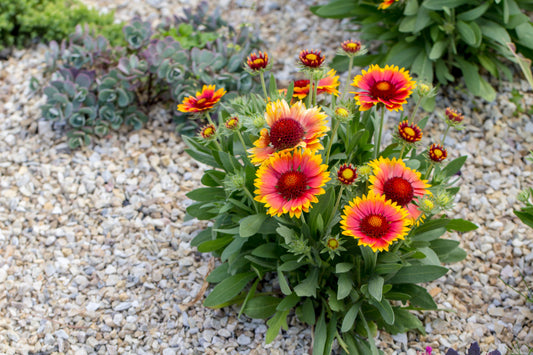Artichoke Planting & Growing Guide
-
Pre-Potted; At Soil LinePlanting Depth
-
3 ft.Planting Proximity
-
Spring to SummerPlanting Season
-
Plant Benefits
-
ModerateWater Quantity
-
Harvest Artichokes around 4.5 inches diameter for best results.Bloom Season
-
Full Sun; Afternoon shade in hot climates.Sunlight Quantity
-
Zones 8-10 (Perennial); 7 & below (Annual).Hardiness Zones
Where to Plant Artichokes
Plant Artichokes in full sun in well-draining soil. In hotter climates, choose a location that will provide some afternoon shade. In areas with heavy clay or poor-draining soil, it’s best to plant in a raised bed or container.
When to Plant Artichokes
Plant Artichokes in early spring when the danger of frost has passed.
How to Plant Artichokes
- Find a location with full sun (afternoon shade in hotter regions) and well-draining soil. If you notice that water still puddles 5 to 6 hours after a hard rain, it's best to find a different spot or plant in a raised bed or container.
- Plant your Artichokes as soon as possible after they arrive. If you can’t plant immediately, make sure to give them a drink of water and set them somewhere out of direct sun and wind until you can get them planted.
- Dig a hole the same depth as the nursery container. Remove the plant from the container and set in the hole. If the roots look compacted, it’s okay to gently loosen them a bit. Fill the hole with soil and tamp down firmly. If planting multiple plants, space them 3-4’ apart.
- Water thoroughly after planting to settle the soil around the roots.
How to Grow Artichokes
- Water at least once a week, more often in warm weather; 1” of water at a time is a good estimate. Drip irrigation or soaker hoses help get the water right at the roots with minimal evaporation and reduce the spread of diseases like powdery mildew.
- Add a heavy layer of mulch or compost to the surrounding soil to improve drainage, reduce evaporation, and keep competing weeds at bay.
- Apply a balanced fertilizer or fish emulsion solution at mid-season and after harvest.
Artichoke Tips & Tricks
- Control insect pests like aphids with applications of Neem oil. Earwigs, snails, and slugs can also be a problem; control them by sprinkling the surrounding soil with diatomaceous earth.
- Harvest artichoke buds when still tightly closed by cutting an inch or two below the base of the bud. Baby artichokes can be harvested and eaten whole when buds are no bigger than an apricot. Larger buds become tougher and petals must be peeled off and eaten individually.
- Cut the main stalk down almost to the ground after harvesting the last bud and you may be able to get a second harvest.
- Cut stalks almost to the ground when the leaves turn yellow at the end of the season and cover with mulch. Artichokes are usually productive for about five years and then need to be replaced.



